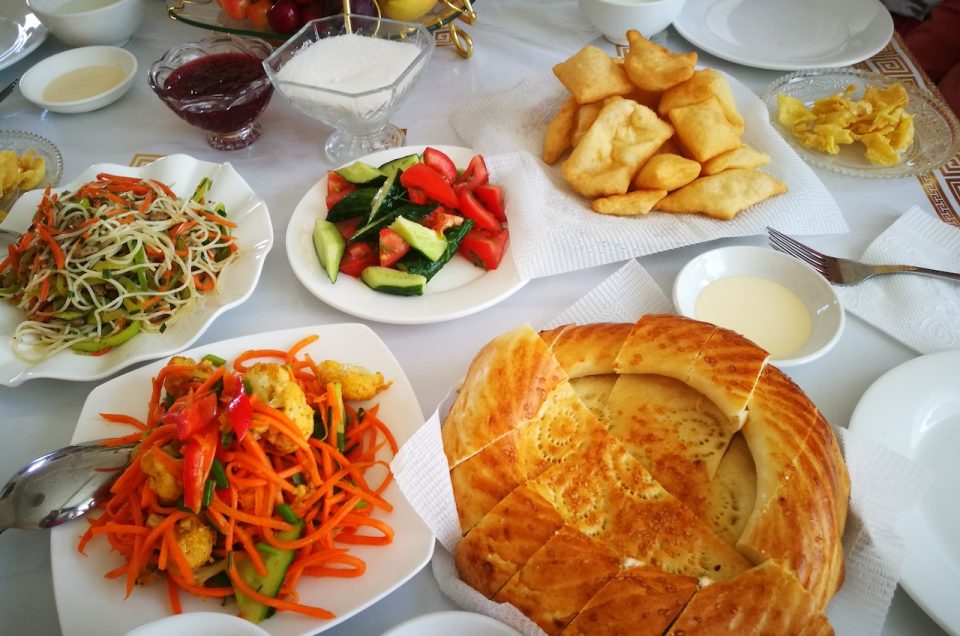
Kyrgyz cuisine is not exactly well known in other parts of the world. Since Kyrgyzstan is a relatively unknown destination for travel until recently, any first time visitor will be curious as to what to expect at mealtimes.
At bigger cities like Bishkek, Osh and Karakol, travelers may enjoy restaurants offering a wide variety of international cuisine including Chinese, Korean, European and Russian.
Out in the provinces and especially if you are staying at guest houses and home stays, you are likely to be served traditional Kyrgyz fare.
Food sheds light on the people's way of life and their cultural heritage and Kyrgyz cuisine is a legacy of their nomadic culture. Meats and dairy products feature heavily in a Kyrgyz meal. Kyrgyz people often raise livestock, so a lot of the food typically comes from animals that are easily herded. Beef, mutton are their staple while horse meat is reserved for special occasions. Traditionally, vegetables are not cultivated, so vegetables are scarce in their diet. However with modern agriculture, you can find carrots, potatoes, tomatoes and cucumbers incorporated into their meals.

Kyrgyzstan was once on the path of the ancient Silk Road. Traders and merchants who plied the route for centuries also introduced their culture and cuisine from their home country. This means you’ll also find dishes adapted from other cultures; Uighur, Dungan, Uzbek, Turkic, and Russian amongst others, with Kyrgyz fare on dinner tables across the country.
To the Kyrgyz, meymandostuk, or hospitality, is almost sacred. It is pretty customary when entering someone’s home or yurt to be offered bread and tea immediately even if you’re only staying for a few minutes! And it is imperative that you take it, even if just a little.
